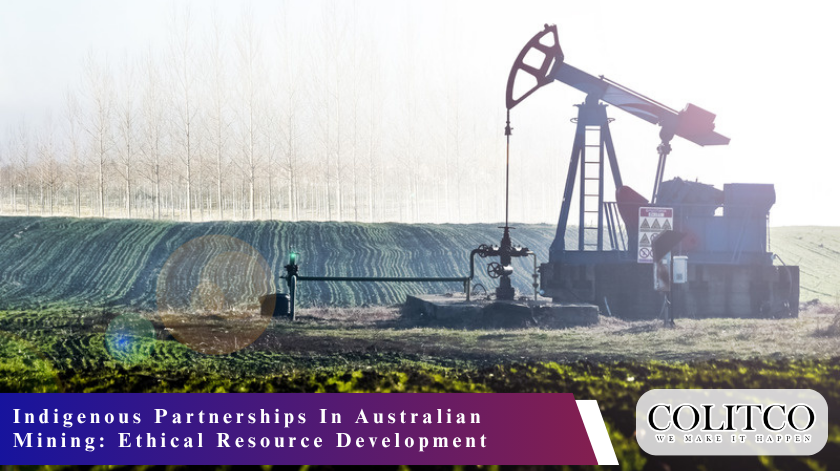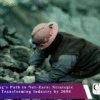Indigenous partnerships are revolutionising Australian mining so that the sector may now be transformed into an ethical and inclusive practice. Mining projects in the past went ahead with little to no consultation or engagement with the Indigenous residents, inflicting cultural, social, and environmental harms in the process.
Today, companies recognise that consultation with Traditional Owners is a prerequisite not only for securing regulatory approvals, but also for attaining social licence. Through such partnerships, Indigenous leaders participate throughout the planning, decision-making, and ongoing monitoring of projects.
These partnerships ensure that operations respect sacred sites, land custodianship, and community priorities, helping to further reduce potential disputes and risks. Companies also benefit from the incorporation of traditional ecological knowledge in their practices, to the advantage of environmental management, water protection, and biodiversity conservation.
Employment schemes, scholarships, and business opportunities are the very tangible benefits these partnerships create for the communities. With respect combined with economic self-determination, Indigenous partnerships are proof that resource development can be profitable and socially acceptable at the same time, meeting international ESG criteria and building trust for the long haul.
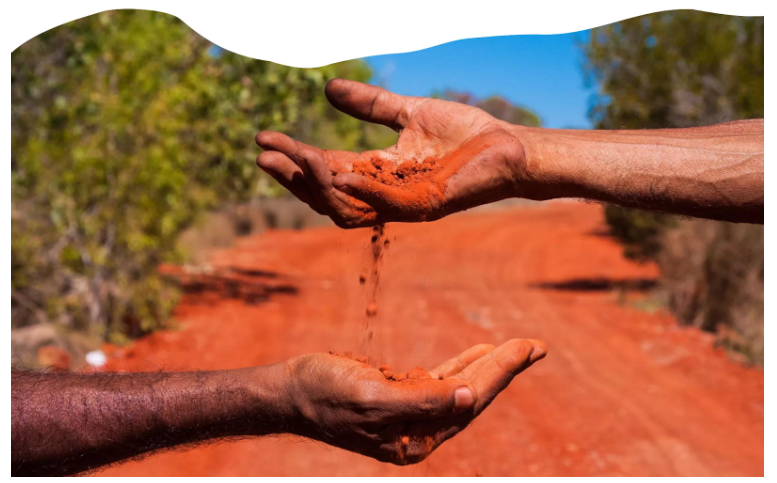
Indigenous partnerships are transforming Australian mining into ethical, inclusive practices.
Why Is Ethical Development Vital In Resource Management?
Ethical development in mining places the economic interests of the country against the rights of the Indigenous people and environmental sustainability. Historically, Indigenous communities were displaced, their culture destroyed, and their ecological systems damaged by resource extraction.
Today, ethical codes aim at giving respect to projects on sacred sites, biodiversity, and water systems. The inclusion of Indigenous ecological knowledge in mining opens avenues for heightened environmental stewardship and supports perspectives not recognised by conventional science. Strict compliance will no longer do the trick; true engagement requires consultation, consent, and co-designed agreements, thereby turning Indigenous communities into co-decision-makers that influence how mining touches their lands.
Ethical development works for mining companies in that it deters protests, reduces litigation risk, and averts project delays. This kind of engagement also fosters chances for investors interested in ESG criteria and global accountability standards. Through reciprocal learning opportunities provided, this engagement strengthens the skills, capacity, and culture-awareness of mining communities and yields resilient and sustainable outcomes concerning economic, environmental, and social objectives.
What Are The Key Challenges Facing Indigenous Mining Partnerships?
In spite of the advances achieved, Indigenous mining relationships face many challenges that require proper handling. The negotiation of a fair agreement often turns difficult as expectations differ from those of the company and the communities. Initial engagement may be hindered by the backdrop of mistrust that sometimes must be transcended. In some cases, matters about past projects come back to haunt the present.
Protection of cultural heritage presents a tricky area; mining operations may affect sites that are sacred, archaeological, or landscapes with spiritual significance. Another problem lies in the distribution of economic benefits; in some cases, the communities may lack good governance and management capacity, thereby defeating the very purpose of such arrangements.
Thus, in such cases, companies should extend the arrangements to governance and training programs. Legal and regulatory configurations add extra layers of complexity to partnerships, with the risk of conflicts emanating from concomitant federal, state, and Indigenous legislation. Long-term trust is, therefore, central to that. Partnerships require ongoing engagement, transparent disclosure, and inherent flexibility.
Companies will want to ensure that benefits, environmental protection, and governance mechanisms keep pace with the trajectory of industrial development, such that collaboration and social license remain maintainable.
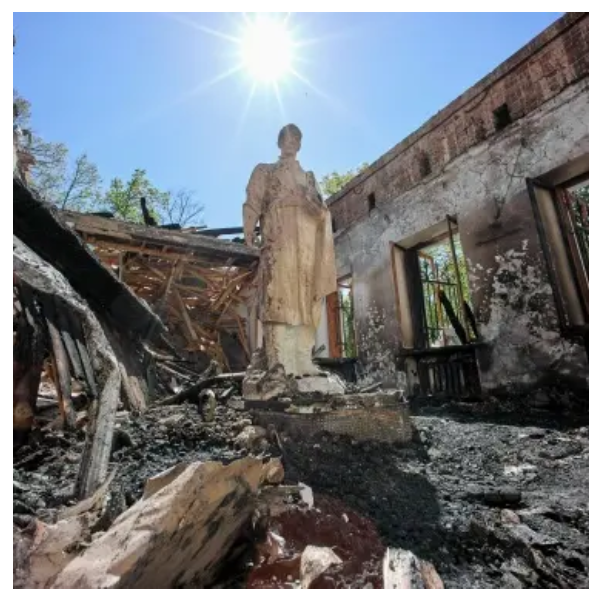
Cultural heritage protection is crucial; mining may impact sacred, spiritual sites.
Which Case Studies Highlight Successful Indigenous Collaborations?
Several Australian mining projects display how Indigenous partnerships can achieve mutually beneficial outcomes. The Argyle Diamond Mine in Western Australia entered into agreements with the Traditional Owners for employment and training, as well as for heritage protection. These projects sought to balance cultural respect and economic growth and, in that regard, created a precedent for other projects.
In building trust between the Banjima, BHP and its co-management character, scholarships for education, and shared land-use decision-making were emphasised, making sustainable mining operations possible.
A learning experience with Fortescue Metals Group negotiations with the Yindjibarndi focused on dispute resolution, transparency, and fair royalties. The Juukan Gorge debacle in 2020, wherein sacred caves were destroyed, brought the dangers of missing the engagement opportunity into full glare and reshaped industry policies on heritage protection.
Other examples, including the Tanami Gold Mine operated by Newmont and Iluka Resources in Victoria, are proof that well-crafted agreements lead to employment, business opportunities, and environmental safeguards that foster ethical and sustainable mining practices in Australia.
Indigenous Partnerships Strengthen Local Economies And Employment
Economic empowerment constitutes the foremost objective of Indigenous mining partnerships. Such programs of employment afford secure jobs in remote areas, while procurement agreements sustain Indigenous businesses along mining supply chains. Training programs, apprenticeships, and scholarships provide the younger generations with a road to the professions, allowing for an enhanced skill base and self-reliance.
Advances in community living standards are deposited into infrastructure, health services, education, and housing projects through royalties and profit-sharing. Partnerships act as a stimulus to regional entrepreneurship, wherein there is construction, logistics, and technical environmental services. When done with full transparency, there are intergenerational benefits to all stakeholders, and mining operations gain social license.
Capacity-building programs help communities develop skills for resource management, both financial and operational, and thus promote sustainability. By merging economic development with cultural respect, Indigenous partnerships show that mining can have a meaningful impact on the community while staying profitable and environmentally responsible.
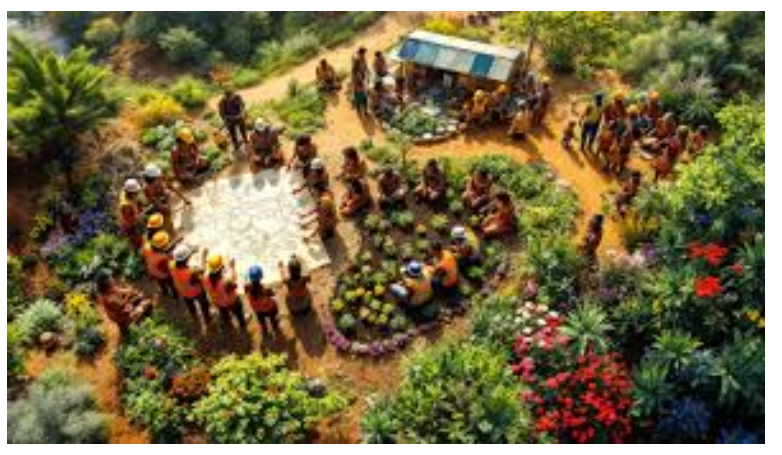
Indigenous mining partnerships drive economic empowerment, jobs, and local business growth
Cultural Heritage Protection Remains A Core Responsibility
Cultural heritage protection is at the core of Indigenous partnerships in mining. Sacred and ceremonial sites, as well as archaeological areas, witness immense spiritual and historical value. Mining organisations are to ensure that these areas are held in respect. Modern projects, however, now incorporate cultural mapping, elder consultation, and Indigenous monitors who help steer the operations.
Technology also complements these aspects by using GPS mapping and drone surveys to identify sensitive zones before any work begins. Failure to preserve heritage, as in the case of Juukan Gorge, can lead to reputational damage, court sanctions, and distrust from the community. By accommodating cultural preservation in their operational planning, the companies place themselves as the ethically responsible ones.
These efforts provide for the long-term collaboration between the entities and, indirectly, the foundation of social license, ensuring that mining activities do not cause irreversible damage to the communities’ cultural landscapes. Sustainable resource management now depends on balancing economic interests with Indigenous cultural values.
How Do Partnerships Improve Environmental Stewardship In Mining?
Indigenous partnerships, she said, are very important in environmental stewardship within the mining industry. Traditional ecological knowledge imparted more understanding of land, water, and biodiversity management to these partner communities. Indigenous rangers normally have been found working together with mining team members in monitoring ecosystems, managing wildlife, and guiding rehabilitation.
More and more projects are including Indigenous-governed revegetation programs, water programs, and conservation programs. This way, mining activities ensure that ecological disturbance is kept to a minimum and sustainable for a lifetime. Companies could take advantage of local knowledge in the control of erosion, water contamination, and maintenance of habitats for native species.
Such collaborations have reflected well in the eyes of investors and regulators since they accepted that responsible environmental practices ultimately reduce the risk level of operations while boosting ESG performance. Mixing modern science with Indigenous knowledge creates mining projects with more responsible, resilient, and culturally appropriate outcomes, thereby enhancing their environmental and social sustainability.
Ethical Resource Development Builds Long-Term Trust With Communities
Trust is the cornerstone of profitable Indigenous partnerships in Australian mining. Communities weigh companies according to their behaviour and consistency in dealing with respect for the local culture. Ethical resource development would entail fair sharing of its benefits, preservation of culture, and meaningful participation in decision-making.
Transparency, reporting, engagement, and independent audits—all play a role in holding stakeholders accountable. Companies acknowledging past errors and instituting corrective measures further build credibility and goodwill. This builds trust and lowers operational risks such as protests, legal challenges, and project delays. It would also help strengthen the social license to operate, thereby securing long-term project viability.
For Indigenous communities, the trust would be assurances of their rights being recognised, as well as being channels to their employment, education, and economic prospects. Ethical development creates room for joint work, proving that mining can prosper economically while providing for social cohesion, cultural preservation, and sustainable outputs.

Trust is central in Indigenous mining partnerships, built through consistent cultural respect.
What Role Do Investors Play In Driving Ethical Mining?
Global investors are increasingly setting mining practices according to ESG performance priorities. Partnerships with Indigenous peoples have become one of the main investment criteria considered. Responsible investors favour companies that have transparent methods of engagement, show respect culturally, and treat the environment ethically.
Such access, thus, effectively invests the ethical parties and punishes those projects that stand in the way of Indigenous rights. Investor demands for reporting often become very fine-grained, encompassing matters of social impact, heritage protection, and community benefits. Strong partnerships diminish reputational risk, protect shareholder value, and ensure adherence to international standards.
Aligning economic goals with ethical practices makes Indigenous partnerships a conduit for long-term financial sustainability. Companies that choose to ignore this kind of ethical imperative will face disinvestment, public tough talk, and legislative interest; investor pressure, in this way, creates pressure for accountability where mining operations turn to making money while being socially and culturally responsible-a testament to the Indigenous people’s role in contemporary resource development.
The Future Of Indigenous Partnerships In Australian Mining
The future of Indigenous partnerships in mineral extraction in Australia is about collaboration, sustainability, and shared decision-making processes. Increasingly, Indigenous leaders are taking part in governance, operational planning, and overt monitoring activities for projects.
Heritage protection, ecosystem management, and transparent reporting will continue to be supported by modern technologies. These partnerships go beyond employment and include projects that foster entrepreneurship, education, and capacity-building. Global ESG trends and regulatory frameworks will exert increasing pressure on companies to engage ethically.
The long-run result depends on continuous consultation, sharing of benefits, and respect for culture. Companies investing in trust, transparency, and jointly created value appear to be best positioned to secure strong social licencing and achieve operational resilience. Indigenous partnerships have come of age and are now part and parcel of the mining industry, and hence it is evidenced that ethical resource development is indeed feasible and profitable, with benefits for communities, companies, and the broader Australian economy itself.
Also Read: Bravus Indigenous Partnership Gains Recognition
FAQs On Indigenous Partnerships In Australian Mining
- What are Indigenous partnerships in mining?
These partnerships stand for agreements entered into between mining firms and Indigenous communities to share fair benefits, protect culture, and oversee environmental stewardship.
- Why do these partnerships demand ethical conduct?
Protecting culture, gaining social licence, and fostering long-term sustainability require ethically sound practices.
- Which companies lead in Indigenous engagement?
BHP, Rio Tinto, Fortescue Metals Group, and Newmont have all established notable partnership frameworks.
- What kind of economic benefits do partnerships bring to local communities?
They generate employment and provide avenues for local businesses; training and sociated royalty payments to develop community infrastructure.
- How do partnerships ensure cultural heritage protection?
Through land use mapping, consultation, and Indigenous monitors, companies make sure sacred sites are not disturbed.
- What can the environmental stewardship do?
Indigenous knowledge assists in the management of ecosystems, water, and biodiversity, and in doing so, faces a reduction in ecological impacts.
- How will Indigenous partnerships evolve?
They will extend into governance, entrepreneurship, education, and jointly designed environmental management initiatives.

